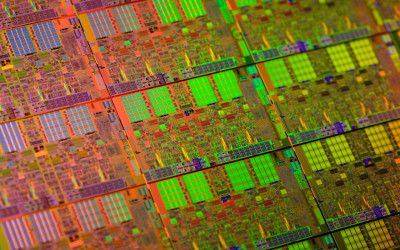From our front-page news:
In the fall of 2006, the world saw the launch of the first desktop quad-core processor. It came from Intel in the form of the Core 2 Extreme QX6700, and although it wasn't overly fast when compared to higher-clocked dual-cores, the fact that the chip contained two dual-cores put together (literally) got people talking. At that time, many people were still trying to find a use for dual-cores, so quad-cores were laughable for some.
Since that time, though, it's become obvious where quad-cores and multi-core processors in general can shine. Today, it's not unlikely that any computer user could take full advantage of a quad-core, because even mainstream applications today are being built with multi-threadedness in mind. Videos encode faster, audio encodes faster, alterations to images render faster, et cetera.
I think by now many people would give the nod to quad-core for having real use for a lot of people, but it's when we go higher that the effectiveness of such a solution becomes hard to gauge. When we reviewed Intel's octal-core Skulltrail system last spring, we really had a difficult time putting all eight cores to good use. So what has to be done? Well, more applications need to be written with multi-threaded goals, and companies like Microsoft need to make sure their OS can equally take advantage of the extra cores.
Fortunately, Windows 7 improves itself over Vista for making itself useful to multi-core, and part of that is new support for up to 256 cores total (compared to 64 for Vista). While those numbers seem astronomical at this point in time, who knows what the future's going to bring. After all, if certain scenarios were truly multi-threaded and could take advantage of such a large number of cores, we might begin to see processors with dozens of slower-clocked cores, similar to Intel's Larabee. Don't quote me, but if Microsoft is taking multi-core so seriously with Windows 7, you'd imagine there might just be a reason for it.

The improvements that enabled the increased number of cores also will improve performance with standard consumer numbers of cores -- typically 2 to 4 -- via improvements in cache and workload balancing. Microsoft Visual Studio 2010 also features greatly improved support for multi-threading and should allow Windows applications makers to make more efficient Windows 7 apps that leverage multiple cores.
Source: DailyTech
Since that time, though, it's become obvious where quad-cores and multi-core processors in general can shine. Today, it's not unlikely that any computer user could take full advantage of a quad-core, because even mainstream applications today are being built with multi-threadedness in mind. Videos encode faster, audio encodes faster, alterations to images render faster, et cetera.
I think by now many people would give the nod to quad-core for having real use for a lot of people, but it's when we go higher that the effectiveness of such a solution becomes hard to gauge. When we reviewed Intel's octal-core Skulltrail system last spring, we really had a difficult time putting all eight cores to good use. So what has to be done? Well, more applications need to be written with multi-threaded goals, and companies like Microsoft need to make sure their OS can equally take advantage of the extra cores.
Fortunately, Windows 7 improves itself over Vista for making itself useful to multi-core, and part of that is new support for up to 256 cores total (compared to 64 for Vista). While those numbers seem astronomical at this point in time, who knows what the future's going to bring. After all, if certain scenarios were truly multi-threaded and could take advantage of such a large number of cores, we might begin to see processors with dozens of slower-clocked cores, similar to Intel's Larabee. Don't quote me, but if Microsoft is taking multi-core so seriously with Windows 7, you'd imagine there might just be a reason for it.

The improvements that enabled the increased number of cores also will improve performance with standard consumer numbers of cores -- typically 2 to 4 -- via improvements in cache and workload balancing. Microsoft Visual Studio 2010 also features greatly improved support for multi-threading and should allow Windows applications makers to make more efficient Windows 7 apps that leverage multiple cores.
Source: DailyTech
